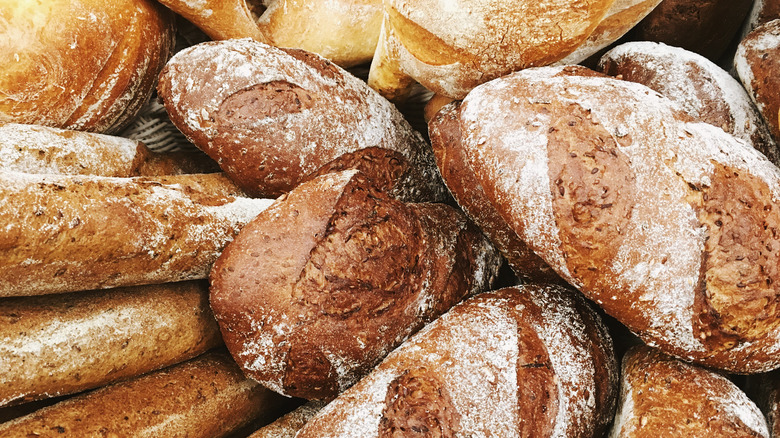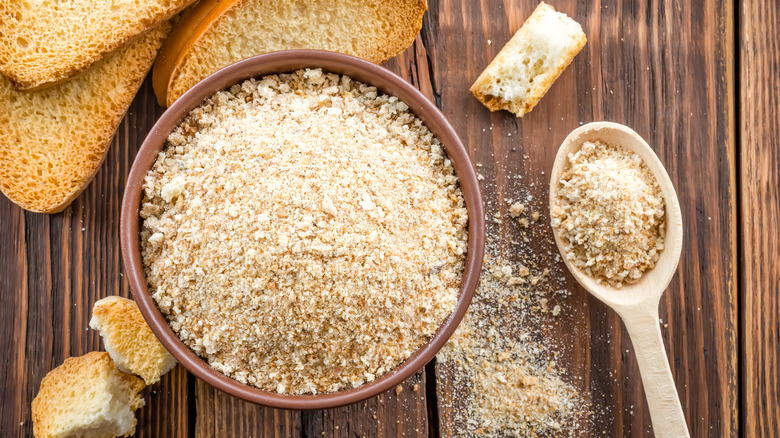Breadmaking Was Never The Same After One Entrepreneur's Late-1800s Invention
It's easy to take bread for granted, with easy access from countless supermarkets, bakeries, or home-kitchen bread-maker devices. But it wasn't always that way, especially in the 1800s when daily bread making was a laborious manual process. Fortunately for modern chefs, a formerly enslaved man from South Carolina changed all that, opening a new realm of doughy possibilities.
In an unlikely journey from slavery to Civil War-era blacksmith, post-war servant, and eventual entrepreneur in the restaurant and hotel industry, a man named Joseph Lee gifted the world with a patented kneading machine for producing consistently uniform loaves of bread. This eliminated all those hours kneading bread by hand, while also creating the foundation for an entirely new phenomenon: dependably consistent loaves for commercial use, and the eventual automation of packaged and pre-sliced breads for everyday home kitchens.
The machine invented by Lee, his first filed patent inn 1894, sprung from accumulated knowledge through years of culinary service, including manual bread making onboard a ship. From his later investiture in the hospitality industry, including ownership of the extravagant Woodland Park Hotel in Boston, Lee evolved as a problem-solver, leading to the technique employed in that first kneading machine. It involved conveyors revolving in opposite directions, forcing the dough into a central spot, where pestles evenly kneaded it to perfection, resulting in better texture and reduced waste. The crafty invention solved many a restaurant woe, while inadvertently creating a new one. No worries, as Lee once again rose to the occasion.
From bread to crumbs and a brand new patent
With the success and efficiency of Joseph Lee's kneading machine, his restaurants and related venues inherited an entirely new dilemma: an over-abundance of bread. Even with the constant patronage of Boston's wealthy residents at his Woodland Park Hotel, plus the prestige of guests such as three U.S. presidents, it was difficult to consume all the beautifully created loaves of fresh bread. Enter Lee's next invention.
The year after he patented his kneading apparatus, Lee introduced a bread crumbing machine. It transformed stale leftover bread from a waste liability to a crunchy asset that's now a common cooking ingredient: bread crumbs that can be used for topping or coating any number of dishes. It also provided easy access to a then-favorite breakfast item, bread crumbs in milk — something a bit reminiscent of today's popular breakfast cereals.
Lee's inventions brought well-deserved recognition, eventually earning revenue from rights assignments, associated royalties, and other forms of income. Even more important was his success in helping break barriers for Black inventors, who struggled with gaining legal patents and rights for their innovative inventions. Lee's name appeared in the first complied list of 92 Black patent holders, which was incorporated into the 1894 Congressional Record by the only Black member of Congress, George Washington Murray. It documented the ingenuity and legitimacy of often overlooked or thwarted entrepreneurs in the Black community. Modern bread making machines still employ similar concepts or components of Lee's inventions.

